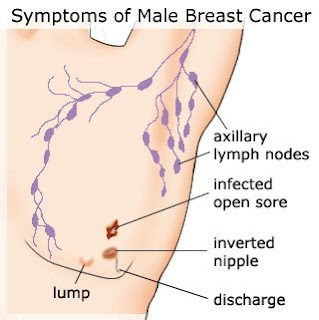How nice it would be if office systems would function like the web — ask for something, and there is the information, in multimedia, from across the globe. Analysts say there’s a near-possibility of that with service-oriented architecture. And that banks will lead the way in embracing it.
As organizations grow, acquire other business or discard some, as they consolidate operations, they are finding themselves weighed down by a multitude of applications — legacy and otherwise — that don’t integrate well nor lend themselves easily to marketplace innovations. Integration itself has become a huge challenge and a business opportunity for IT services companies or consultants.
However, there’s a buzzword that’s promising to bring about a new understanding between divisions, a new communication between departments and a new level of communication between businesses. It’s a three-letter acronym that’s been around for some years but not used in a widespread manner because vendors of solutions were so proprietorial in their approach. Service-oriented architecture (SOA), according to Gartner, will be a prevailing software engineering practice by 2008, ending the 40-year domination of monolithic software architecture. “Through 2008, SOA and web services will be implemented together in more than 75% of new SOA or Web services projects,” predicts Gartner.
According to Don Free, principal analyst at Gartner, SOA does not depend upon web services to exist, but since web services are based on accepted standards, they will drive SOA to the mainstream.
“SOAs make it easier to integrate the everything but the kitchen sink IT environments found in most companies. The big value of an SOA is that it works very well in heterogeneous environments. Developers don’t have to spend an inordinate amount of time writing new lines of code to connect applications. Instead, they can use standard protocols, such as Web services,” says Free. Large chunks of SOA code are reusable, reducing development costs.
Yefim Natis, also of Gartner, sums it up: “Essentially, SOA is a software architecture that builds a topology of interfaces, interface implementations and interface calls. SOA is a relationship of services and service consumers, both software modules large enough to represent a complete business function.” So, SOA is about reuse, encapsulation, interfaces and, ultimately, agility.
Several IT product companies are in the process of rejigging their products to fit the new cut. According to Henning Kagermann, CEO of the ERP giant SAP, “Companies are spending billions of dollars on IT - and most have packaged IT systems. Service-oriented architectures enhance enterprise agility. We have embraced SOA with NetWeaver, offering new peoplecentric solutions, new composite end-to-end business processes.”
In India, companies like Polaris Software, which has a financial services enterprise suite called Orbi One, is propounding SOA. “The Orbi One suite of products is built on a flexible, open architecture platform that can smoothly interface with existing back office and satellite systems.A key feature of Orbi One is its flexible integration layer that seamlessly integrates enterprise wide processes, users and data thereby providing real time analysis and insights to the business while giving a single `relationship’ view to customers,” says a company official.
The new architecture allows a bank to buy the modules it needs now, but Polaris promises that later purchases of other modules will allow seamless integration with other systems, old as well as new.
Says Koen Van Den Brande, president, product group at Polaris Software Lab, “Banks have for many years a challenge - how to hedge existing system and add new business lines. Systems are not integrated, and neither customers nor the staff get a unified view of the transaction or the business. In enterprises too there’s an integration problem. SOA is starting to emerge as a new way of addressing this problem.”
According to him, now the giants like IBM and Microsoft have agreed to the new standards for web services, it will help businesses transact with each other. Similarly, in banks, if say a customer applies for a credit card, the bank can directly check with a central credit bureau about the individual’s creditworthiness. Or if an existing customer applies for a home loan, his repayment ability should be verifiable through the banking system via web services.
Van Den Brande says that even the “best of breed solutions” approach does not work because this perpetuates the differences in the systems already existing within the bank.
SOA is starting to look at this problem in a different way. “What if we look at the common information. For instance, there might be valuable customer information available on various sites, and for CRM purposes you may need to put this information together but also perhaps out of the system, but accessible by each department. The link from outside to inside is what the web services contribute,” explains Van Den Brande.
“SOA has been gaining traction as CIOs begin to think seriously about web services,” says Free of Gartner.
In a perfect SOA world, companies improve their ability to adapt to changing business requirements and shifting market conditions.
Security may end up being a big issue because it’s always easier to secure a closed system than an open architecture. Another issue is network monitoring. When a transaction goes awry on a serviceoriented network, which could involve multiple service providers, finding out what went wrong or where the transaction dropped or whether someone put bad information in the network can be a challenge.
“Spending on SOA infrastructure is particularly important, especially for banks, as a means of realising increased operational efficiency and reduced time to market. Service-oriented core banking architecture will be a key success factor for banks, since this will enable them to bring specialised niche product and service offerings to market, quickly and inexpensively, and will enable them to be highly competitive, even with much larger institutions,” says Free.
Tag: Multimedia, service oriented architecture, innovations, Gartner Research, interface implementations, interface calls, Polaris Software, Orbi One, IBM, Microsoft, service oriented architecture soa, what is service oriented architecture, definition, service oriented architecture training







